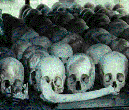www.DarbyRangers.Com Follow Me
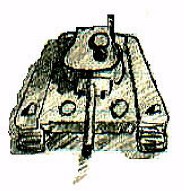   |
The German War-Machine Entrenched at Cisterna
General Mark Clark was 'Distressed' upon learning that the Rangers had been used as the Spearhead.
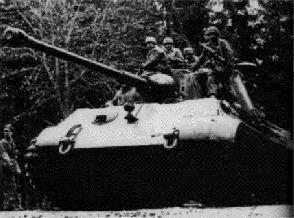 Heavy Weapons and Combat Ready
Heavy Weapons and Combat ReadyThe Rangers at Cisterna faced members of the 3rd Panzer Grenadier Division, the 715th Motorized Infantry Division, attached units of the 14th German Army; to include elements of the 4th FallschirmJager Division: Paratroopers; comprised of the remnants of the Elite 2nd Fallschirmjager bolstered by polish and Italian Paratroopers; and other elements of Herman Goering's Panzer Division.
Despite this amassed firepower the 1st & 3rd Ranger Battalions held their own in an open field for hours.
German Para's on a Late Production Tiger Tank December 1944 (6)
A battalion of the Nembo Parachute Group training at Spoleto was rushed to help seal the beach-head, fighting alongside the 4th Fallschirmjäger by the time the landing at Anzio was two weeks old (Jan. 1944).
An "Armistice" had been negotiated by Generals of the Italian Army after the Nazi's turned their back on their ally Italy. The battalions of the Nembo chose sides, according to the loyalty of the commanding officer and/or the leadership which either sided with the King or Mussolini. Most of the 3rd Folgore Battalion decided to keep fighting with the Germans as did the 12th, both eventually joining with the 1st Fallschirmjäger Corps deployed around Rome. (AH1 Paras)
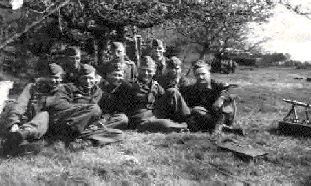 (Photo Used With Permission: Ciaran Byrne and a very special Thank You.)
(Photo Used With Permission: Ciaran Byrne and a very special Thank You.)X German X
Fallschirmjager - Paratroopers
|
This photo (Right) was taken in Italy in 1944 and shows a group of Fallschirmjäger at rest. They can be identi-fied as Fallschirmjäger by the jump boots worn by the man on the extreme right and also by the figure on the far left wearing para style ammunition bandoliers and by the figure in the center who is wearing a jump qualific-ation badge.
The 3rd Panzer Grenadier Division at Cisterna was one of Germany's motorized infantry units. The soldiers who fought in these units were known as panzergrenadiers for the fact that, unlike their infantry counterparts, they usually traveled via motor vehicles rather than by foot. Considered elite front line units because of their mobility, panzergrenadiers usually found themselves thrust into battle alongside armored panzer divisions.
 |
Members of a German Motorized Battalion; probably Panzergrenadiers
Public Domain Photos/Half Track Hobbies
Typically the Panzergrenadiers would advance and fight from armored half-tracks or trucks gaining armor protection and mobility until they were close enough to assault enemy positions on foot. Their mobility and speed allowed them to act and react quickly as the situations became fluid and changed moment to moment.
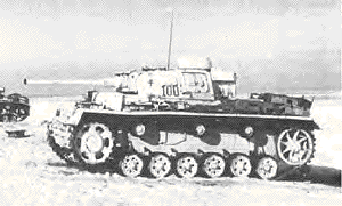 |
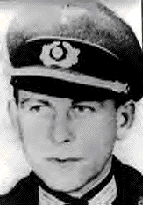 |
Public Domain Photos/Half Track Hobbies
A PZ.Kfz.III of the 103.PZ.ABT. 'Panzer' and Major Rudolf Haen
The Panzer above is seen in action outside of Stalingrad Russia
Major Haen commanded the 1/Pz. Abteilung 103 of the 3rd Panzer Grenadier Division; part of Herman Goering's Panzer Division at Cisterna.

Public Domain Photos/Half Track Hobbies
More information on the German Tiger Tanks
Haen had seen action during Anzio then at Cisterna and later at Metz, Aachen, the Ardennes Offensive, and Remagen until surrender in the Ruhr in April 1945; (see the movie 'A Bridge too Far' )
Major Haen died in a prisoner of war camp on May 9, 1945
while in American captivity.
The 3.infanterie-Division was reformed in the Spring of 1943 in the Lyon region of France, and was formed as a combined unit from the few remaining pieces of the original 3.Infanterie-Division and from the 386.Infanterie-Division which originated from the Frankfurt/Oder region. The newly formed 3.Infanterie-Division was then renamed as the 3.Panzergrenadier-Division after a decree by Hans Guderian that all motorized infantry divisions be redesignated as panzergrenadier divisions; resurrecting their regimental numbers.
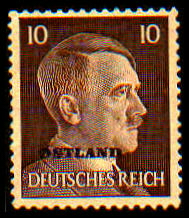 (7) (7)Adolf Hitler
Postage Stamp
Hitler actually received a percentage of every stamp with his likeness on it.
|
Silence Here. The Enemy is Listening
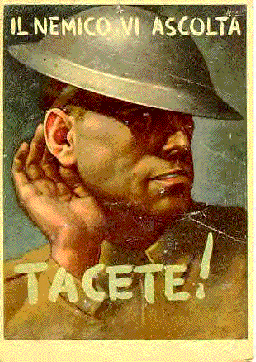 Italian Postcard (9)
|
The German high command believed that the new description would boost morale of the motorized grenadier, who despite the lack of halftrack vehicles, also fought alongside their tank battalion just like the panzer division counterparts; mostly these units moved by truck.
Those trucks seen in the video's of Aerial attacks by allied war planes could have carried more than met the eye at the time; one wonders about targets of opportunity and how many trucks were by-passed for more 'productive' targets; leaving a deadly force in the rear.
 |
Mark IV Panzer - 75 mm Self Propelled Gun (6)
Other Tank Units in the Anzio Area:
schwere Panzer-Kompanie or Tigergruppe Meyer
schwere Panzer-Kompanie or Tigergruppe Schwebbach (Dec 43)
26-28 Jul 43 this unit, named after its commander, was formed by schwere Panzer-Ersatz-und Ausbildungsabteilung 500 with 8 Tigers for service in Italy
early Aug 43 arrival in northern Italy
Sep 43 assists in disarming Italian units
early Dec 43 transferred south of Rome, near the western coast
22 Jan 44 planned counter-attack into the Allied beachhead
at Anzio inexplicably cancelled late Jan-Mar 44 operations vicinity of Anzio
3 Mar 44 incorporated into s.Pz.Abt. 508
schwere Panzer-Abteilung 508
11 May 43 originally formed by reorganization and redesignation of I./Panzer-Regiment 29 (in France)
8 Jul 43 redesignated I./Panzer-Regiment 29 again and re-equipped with Panther tanks
25 Aug 43 s.Pz.Abt. 508 reformed in France from remnants of Pz.Rgt. 8 and Pz.Abt. 190 [Tessin: 15 Sep 1943]
10 Dec 43-24 Jan 44 equipped with 45 Tiger I's
29 Dec 43 Pz.Kp. 313 (Fkl) attached
4-12 Feb 44 sent to Italy for counterattack on the Anzio beachhead (8)
The German staff also recognized that tank units were of more significance than simply being an attachment to an infantry division. And this allowed for a strong one-two punch when engaged with the enemy.
The 3.Panzergrenadier-Division was sent to Italy in June 1943 where it took part in the Battles for Salerno, Cassino, The Bernhard Line and the Anzio beachhead where it fought against the American forces in the areas of Aprilla and later was rushed to Cisterna to block the crossroads.
The German unit at Cisterna flew the 'Cross of Lorraine' as its banner and called itself; 'Kreuz und Quer' or 'Trouble...' and indeed; they turned out to be trouble for the 1st and 3rd Ranger Battalions.
The Battle for Cisterna raged for three days following the collapse of the Ranger Operations.
The battle stalled with the Allies one mile short of their objective. And Haen and his men like many other units slipped thru the Allied net to fight on til the very end of the war.
The actions in the battle helped to stall the Allied advance and breakout until the general retreat to Rome could be accomplished in May and June of 1944. In late June 1944 the remnants of the 3rd Panzergrenadier's were transferred to Florence for refitting. (3)
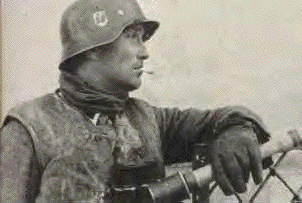 |
War weary German SS Trooper with a 'potato masher' grenade
How deep were the Germans dug in at Cisterna?
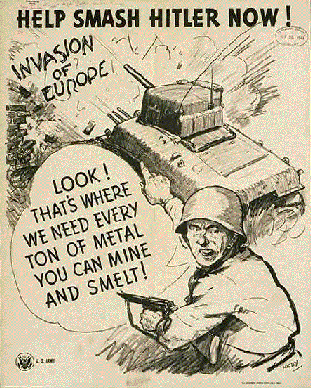 Reports from the Italian Front
Reports from the Italian Front23-MAY-1944:
Italian Front: The general offensive in the Anzio area begins. At dawn's light, 500 guns open fire while 60 bombers raid Cisterna. At the end of the bombardment, the American 45th, 3rd and 1st Armored Divisions of the VI Corps go forward. The German line holds firm despite the violence of the attack. Despite extremely high losses the Americans reach the Cisterna-Rome railway line. The 3rd Division alone has 950 dead, wounded and missing. On the Tyrrhenian coast, units of the American 85th Division advance as far as the outskirts of Terracina. In the British 8th Army sector, the Senger line is breached by the Canadian I Corps who have pushed forward to the Aquino-Pontecorvo Road. (4)
24-May-1944:
Italian Front - Heavy fighting continues around the Anzio beachhead and along the length of the Senger line. The American 1st Armored Division succeeds in reaching Highway 7 north of Latina. Hitler authorizes Kesselring to withdraw Group C army to the Caesar line. To slow down the Allied advances the Germans carry out a number of rearguard actions. The American 85th Division captures Terracina on the Tyrrhenian coast. Units of the Canadian I Corps take Pontecorvo in the northern sector.
25-May-1944:
Italian Front - The US II Corps joins up with the US VI Corps which has broken through the German ring around the Anzio beachhead. The 3rd Division captures Cisterna and Cori. The British 78th Division takes Quino, while units of the British X Corps take Monte Cairo. The Polish II Corps enter Piedimonte San Germano. The British XIII Corps reaches the river Melfa.
It took more than 4 months to Capture Cisterna....
Visit our Worldwide Terrorism Site:
"The only way to make the mass of mankind
see the beauty of Justice...is by showing them;
in pretty plain terms, the consequence of Injustice,"
- Sydney Smith
|
(AH1) "from COORTE IMH Journal, vol1, issue4 www.coorte.com http://nembo.tripod.com/nembopage.html
1. A special Thanks to Terry Moore German Historian/Linguist for German Translations; 1979,
2. Order of the Knights Cross 1979
3. Elements of 3rd Panzer Re-enactors;
4. http://www.ibiblio.org/pub/academic/history/marshall/military/wwii/50.years.ago/jbd/may1944.txt
5. Northwestern University Library: WW II Posters Used with Permission: Source Northwestern University Library Call Number: W107.8:H63 Artist: Kirby. Title: Help smash Hitler now! Publisher: [Washington, DC] : US G.P.O. Date: 1943. Format: 1 poster : b&w ; 51 x 41 cm. Notes: "War Dept.,
Public Relations Bureau"--Monthly catalog 1943, p. 1374.
6. Public Domain Photos/Half Track Hobbies
7. Postage Stamp; F.R. Price historical collection
8.https://members.tripod.com/~Sturmvogel/tigers.html#503
9. Italian Post Card/Public Domain/
